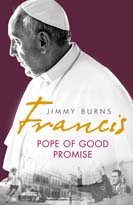World music is in mourning following the unexpected death , aged 66, on a Mexican beach, of Paco de Lucia, one of the greatest guitarists of modern times, a truly musical wizard.
Born Francisco Sanchez Gomez, to a Portuguese mother and an Andalucian father, de Lucia (a name he adopted professionally) spent his childhood in a poor neighbourhood of Algeciras where his talent for playing guitar better than his father flourished amidst the sounds, and legends of the gypsies.
Paco –who was not of pure gypsy blood but carried it musically in his veins and soul-made his first claim to fame in 1962, aged fourteen when together with his older brother-a singer-he won a flamenco prize in Jerez with the name Los Chiquitos de Algericas. He went on to accompany Antonio El Bailarin , one of the most famous flamenco dancers of the late Franco era, and his similarly popular successor Antonio Gades.
Flamenco artists traditionally showed a tendency to remain rooted in the land they were born in.However de Lucia from early manhood travelled across the Atlantic and back, coming into touch with other musical currents in North and South America, while pursuing a conscious search for the genuine roots of flamenco that went deeper than the somewhat superficial folkloric ‘for export’ version that was popularised with the advent of mass tourism during the 1960’s and 1970’s.
It was these roots than he found in his friendship and musical cooperation with the legendary singer Camarón de la Isla. Together the two brought flamenco out of its manicured environment into a far more spontaneous, deeply felt, as well as experimental world that recovered forgotten essentials while breaking new ground.
To anyone listening to de Lucia play or Camaron sing, it was evident that each carried within them a ‘duende’ that essential spirit that turns flamenco into a transformative cultural experience,.
Camaron died in 1992 from lung cancer after a life of hard drinking, hard smoking and drugs. By then the less hedonistic de Lucia, had found increasingly varied sources of inspiration for his creative genius on guitar which in turn enthused a numerous fan base not just in his native Spain, but around the world.
His bestselling LP record ‘Entre Dos Aguas’- between two currents- showed extraordinary rhythmic and melodic versatility, its fusion of Latin American and North African music influencing a new generation of artists in what came to be known as the ‘new flamenco’.
But de Lucia kept exploring. He broke old taboos about the proper way to play a Spanish guitar by crossing his legs and resting the instrument loosely on his body like the blues and jazz and Brazilians musicians he also shared recording sessions and concerts with.
The effortless quick-fire speed and range with which his long thin fingers covered his guitar left an enduring memory on anyone lucky enough to see and listen to this tall dark beauty of a man that made such a positive contribution to cultural engagement, making the music he played truly universal.

